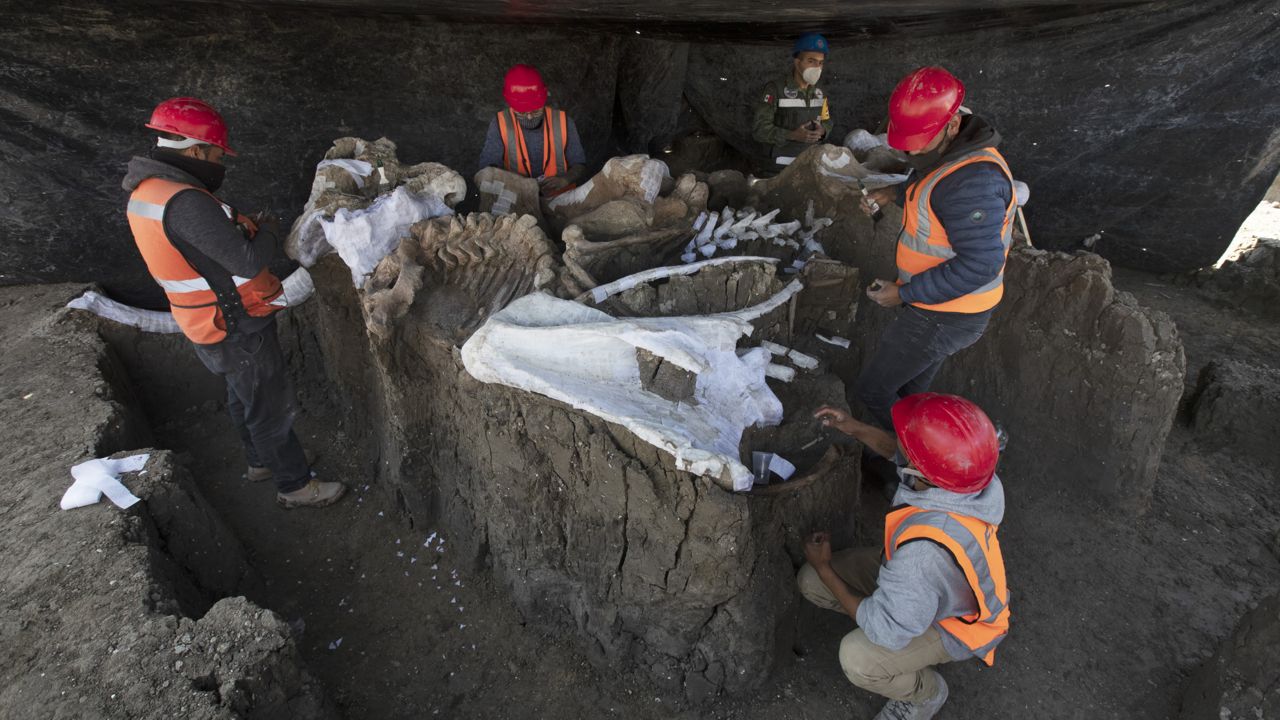MEXICO CITY — Archaeologists in Mexico are celebrating a literal mammoth discovery after unearthing at least 200 skeletons of the prehistoric animals at the site of a new airport outside of Mexico City.
Experts say more mammoths are yet to be uncovered as construction continues at the Santa Lucia airport—so many, in fact, that archaeologists must accompany construction workers each time they break ground in order to inspect the soil for potential dig sites.
“We have about 200 mammoths, about 25 camels, five horses,” lead archaeologist Rubén Manzanilla López of the National Institute of Anthropology and History (INAH) told the Associated Press. “We had the idea that we’d find mammoth remains, but not this many.”
The animals are thought to have died between 10,000 and 20,000 years ago, when the area was a sprawling marshland filled with grass and lakes. Because of the muddy terrain, Manzanilla López speculates that the giant creatures “ventured too far, got trapped and couldn’t get their legs out of the muck,” according to Reuters.
The animals’ remains may have then been carved up by humans, preliminary evidence suggests, but experts are still conducting tests to that end.
“Here we have found evidence that we have the same kind of tools, but until we can do the laboratory studies to see marks of these tools or possible tools, we can’t say we have evidence that is well-founded,” Manzanilla López said.
Experts will continue to excavate the area as long as the airport is under construction, which is scheduled to last until at least 2022. A museum-style mammoth exhibit will reportedly be constructed in the airport's main terminal, according to Reuters.
The site near Mexico City’s airport appears to have outstripped the Mammoth Site at Hot Springs South Dakota — which has about 61 sets of remains — as the world’s largest find of mammoth bones. Large concentrations have also been found in Siberia and at Los Angeles’ La Brea tar pits.
While the scale of the dig is unprecedented, the region is already well-known for its paleontological discoveries. In late 2019, INAH researchers uncovered the remains of nearly 14 complete mammoth skeletons at the site of a planned landfill.
The 2019 discovery was especially notable considering the animals’ remains were found in what experts believe to be man made pits or hunting traps. Previously, there had been little evidence to suggest that Pleistocene-era humans purposefully hunted mammoths.
The Associated Press contributed to this report.




